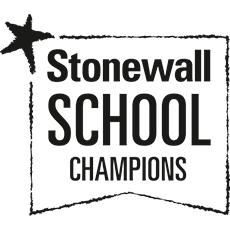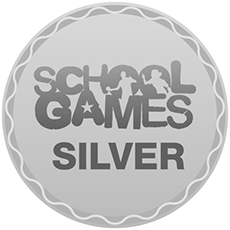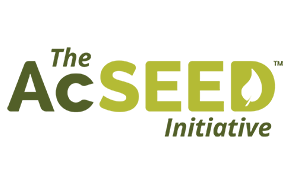Year Ends Targets
Year 5 Reading
I can read aloud and understand the meaning of at least half of the words on the Year 5/6 list. (Word Reading)
I can read, enjoy, understand and discuss an increasingly wide range of fiction, poetry, plays, non-fiction and reference books or textbooks. (Comprehension)
I can read, enjoy and understand a wide range of books, including myths, legends and traditional stories, modern fiction, fiction from the past and books from other cultures or traditions. (Comprehension)
I can write or give a detailed book review including reasons why I would recommend the book. (Comprehension)
I can discuss and compare events, structures, issues, characters and plots of stories, poems and information texts. (Comprehension)
I can discuss and compare events, issues and characters within a book. (Comprehension)
I can prepare poems and plays to read aloud and perform. I can change my voice to make them sound more interesting to listen to and make the meaning clear. (Comprehension)
I can understand what I am reading by checking that the book makes sense and finding the meaning of words from the context. (Comprehension)
I can ask sensible and interesting questions about the texts to help me understand them more. (Comprehension)
I can explain characters’ feelings, thoughts or reasons for their actions. I can explain my thoughts with evidence from the text. (Comprehension)
I can predict what might happen in increasingly complex texts by using evidence from the text. (Comprehension)
I can talk about why authors use language, including figurative language, and the impact it has on the reader. (Comprehension)
I can tell the difference between statements of fact and opinion. (Comprehension)
I can find and write down facts and information from non-fiction texts. (Comprehension)
I can participate in discussions about books that are read to me and those that I can read, building on my own and others’ ideas and challenging views courteously. (Comprehension)
Year 5 Writing
I can spell word endings which sound like ‘shus’ spelt -cious or -tious e.g. vicious, delicious, ambitious, cautious. (Spelling)
I can spell word endings which sound like ‘shil’ spelt -cial or -tial e.g. official, partial. (Spelling)
I can spell words ending in -ant, -ance/-ancy, -ent, -ence/-ency e.g. transparent/transparency, tolerant/tolerance. (Spelling)
I can spell words ending in -able and -ible also -ably and -ibly e.g. adorable, possible, adorably, possibly. (Spelling)
I can spell words containing the letter-string ‘ough’ e.g. bought, rough, through, bough. (Spelling)
I can spell some words with ‘silent’ letters e.g. knight, psalm, solemn. (Spelling)
I can spell some more complex words correctly including words that are often misspelt. (Spelling)
I can use knowledge of root words, prefixes and suffixes in spelling and understand that the spelling of some words needs to be learnt specifically. (Spelling)
I can use the first three or four letters of a word to check spelling, meaning or both of these in a dictionary. (Spelling)
I can use a thesaurus. (Spelling)
I can write increasingly legibly, fluently and with increasing speed through improving choices of which shape of a letter to use when given choices and deciding whether or not to join specific letters. (Handwriting)
I can write increasingly legibly, fluently and with increasing speed by choosing the writing implement that is best suited for a task. (Handwriting)
I can plan my writing by identifying the audience for and purpose of the writing, using other similar writing as models for my own work. (Composition)
I can plan my writing by noting down and developing my initial ideas, drawing on reading other writing where necessary. (Composition)
I can plan my writing of narratives by considering how authors have developed characters and settings in what the class have read, heard and seen in other stories, plays or films.(Composition)
I can draft and write by selecting the correct grammar in my writing. I can use the following punctuation correctly in my work. A . ? ! , ‘ ( ) -. (Composition)
I can write pieces describing settings, characters and atmosphere and include speech that helps picture the character and their personality or mood. (Composition)
I can draft and write by summarising longer passages. (Composition)
I can draft and write by using words such as then, after that, this, firstly, to build connections in a paragraph. (Composition)
I can draft and write by linking ideas across paragraphs using adverbials of time e.g. later, place,e.g. nearby and number,e.g. secondly or tense choices e.g. he had seen her before. (Composition)
I can set out my work correctly and use headings, bullet points, underlining depending on the purpose of my writing e.g. letter, leaflet, information text, instructions. (Composition)
I can use different verb forms with consideration for the audience and purpose. (Composition)
I can give feedback on and improve my own writing and my classmates’ writing. (Composition)
I can give feedback on and edit vocabulary, grammar and punctuation to make writing clearer. (Composition)
I can mark and edit work to have the correct tense throughout. (Composition)
I can mark and edit work to have the correct subject and verb agreement. (Composition)
I can read work looking for spelling errors and correct them using a dictionary. (Composition)
I can proof read for punctuation errors including the use of brackets and other devices such as commas or hyphens used for the same purpose. (Composition)
I can perform my own work to a group with some confidence changing the tone and volume of my voice to make the meaning clear. (Composition)
I can change nouns or adjectives into verbs by adding suffixes such as -ate, -ise, -ify e.g. elasticate, standardise, solidify. (Vocabulary, Grammar and Punctuation)
I can understand verb prefixes e.g. dis-, de-, mis-, over-, and re-. (Vocabulary, Grammar and Punctuation)
I can add information to my sentences using relative clauses starting with: who, which, where, when, whose, that or by missing out the pronoun. (Vocabulary, Grammar and Punctuation)
I can indicate degrees of possibility using adverbs e.g. perhaps, surely or modal verbs e.g. might, should, will, must. (Vocabulary, Grammar and Punctuation)
I can use devices to build cohesion within a paragraph e.g. then, after that, this, firstly. (Vocabulary, Grammar and Punctuation)
I can link ideas across paragraphs using adverbials of time e.g. later, place e.g. nearby and number e.g. secondly or tense choices e.g. he had seen her before. (Vocabulary, Grammar and Punctuation)
I can use brackets and can also use dashes or commas for the same purpose. (Vocabulary, Grammar and Punctuation)
I can use commas to make my writing clear to the reader. (Vocabulary, Grammar and Punctuation)
I can understand the following terms: modal verb, relative pronoun; relative clause; parenthesis, bracket, dash; and cohesion, ambiguity. (Vocabulary, Grammar and Punctuation)
Year 5 Maths
I can read, write, order and compare numbers to at least 1,000,000 (one million) and say the value of each digit. (Number and Place Value)
I can keep multiplying a number by 10 or 100 up to 1,000,000 and count back. (Number and Place Value)
I can use negative numbers in context when looking at temperature or money; counting forwards and backwards through 0. (Number and Place Value)
I can round numbers up to 1,000,000 to the nearest 10, 100, 1000, 10,000 or 100,000. (Number and Place Value)
I can solve number and practical problems that involve ordering and comparing numbers to 1 000 000, counting forwards or backwards in steps, negative numbers and rounding. (Number and Place Value)
I can read Roman numerals to 1000 and recognise years written in these. (Number and Place Value)
I can add and subtract numbers with more than 4 digits using written methods. (Addition and Subtraction)
I can add and subtract 2 and 3 digit numbers in my head. (Addition and Subtraction)
I can use rounding to check answers to calculations and determine levels of accuracy. (Addition and Subtraction)
I can solve addition and subtraction problems needing more than one step and can work out which operation and method is the most suitable. (Addition and Subtraction)
I can find multiples and factors of a number and can identify factors common to 2 different numbers. (Multiplication and Division)
I can use vocabulary relating to prime numbers, prime factors and composite numbers. (Multiplication and Division)
I can work out if any given number up to 100 is a prime number and can recall prime numbers up to 19. (Multiplication and Division)
I can multiply numbers with up to 4 digits by a one or two digit number using formal written methods. (Multiplication and Division)
I can mentally multiply and divide numbers using the times tables. (Multiplication and Division)
I can divide numbers with up to 4 digits by a one digit number using formal written methods and can explain remainders. (Multiplication and Division)
I can multiply and divide whole and decimal numbers by 10, 100 and 1000. (Multiplication and Division)
I can identify and use square numbers and their notation. (Multiplication and Division)
I can solve problems involving multiplication and division including using factors and multiples, squares and cubes. (Multiplication and Division)
I can identify and use cube numbers and their notation. (Multiplication and Division)
I can solve problems involving addition, subtraction, multiplication and division and a combination of these, including understanding the meaning of the equals sign. (Multiplication and Division)
I can solve problems involving multiplication and division, including scaling by simple fractions and problems involving simple rates. (Multiplication and Division)
I can compare and order fractions whose denominators are all multiples of the same number. (Fractions)
I can find and name equivalent fractions of a given fraction including tenths and hundredths. (Fractions)
I can write equivalent fractions of a given fraction including tenths and hundredths. (Fractions)
I can identify mixed numbers and improper fractions and convert from one to another such as 2/5 + 4/5 = 6/5 = 1 1/6. (Fractions)
I can add and subtract fractions whose denominators are all multiples of the same number. (Fractions)
I can multiply fractions by whole numbers using objects and pictures. (Fractions)
I can read and write decimal numbers as fractions such as 0.71 = 71/100. (Fractions)
I can identify and use thousandths and can explain how they relate to tenths and hundredths and their decimal equivalents. (Fractions)
I can round numbers with two decimal places. (Fractions)
I can read, write, order and compare numbers with up to three decimal places. (Fractions)
I can solve problems involving numbers with up to three decimal places. (Fractions)
I can identify the percent symbol % and how it relates to parts per hundred, hundredths and decimals. (Fractions)
I can solve problems which require knowing percentage and decimal equivalents of 1/2, 1/4, 1/5, 2/5, 4/5 and those fractions with a denominator of a multiple of 10 or 25. (Fractions)
I can convert between different forms of metric measurement e.g. Kilometre and metre; centimetre and metre; centimetre and millimetre, gram and kilogram, Litre and millilitre. (Measurement)
I can understand and compare equivalences between metric units and common imperial units. These might include: inches, pounds or pints. (Measurement)
I can measure and calculate the perimeter of composite rectilinear shapes in centimetres and metres. (Measurement)
I can calculate and compare the area of rectangles ( including squares), and including using standard units, square centimetres (cm²), square metres (m²) and estimate the area of irregular shapes. (Measurement)
I can estimate volume by using 1cm³ blocks to build cuboids (including cubes) and capacity by using water and different containers. (Measurement)
I can solve problems where I need to convert between units of time. (Measurement)
I can use all four operations to solve problems involving measure such as length, mass, volume, money, using decimal notation, including scaling. (Measurement)
I can identify 3-D shapes, including cubes and other cuboids, from 2-D representations. (Properties of Shape)
I can estimate and compare acute, obtuse and reflex angles. I know that angles are measured in degrees. (Properties of Shape)
I can draw given angles and measure them in degrees. (Properties of Shape)
I can identify angles at a point and one whole turn. (Properties of Shape)
I can identify angles at a point on a straight line and 1/2 a turn (total 180°). (Properties of Shape)
I can identify other multiples of 90°. (Properties of Shape)
I can use the properties of rectangles to find related facts, missing lengths and missing angles. (Properties of Shape)
I can tell the difference between regular and irregular polygons. I can do this using reasoning about equal sides and angles. (Properties of Shape)
I can identify, describe and represent the position of a shape following a reflection or translation. I can use mathematical vocabulary to explain this and I know that the shape has not changed. (Position and Direction)
I can solve comparison, sum and difference problems using information presented in a line graph. (Statistics)
I can complete, read and interpret information in tables, including timetables. (Statistics)






